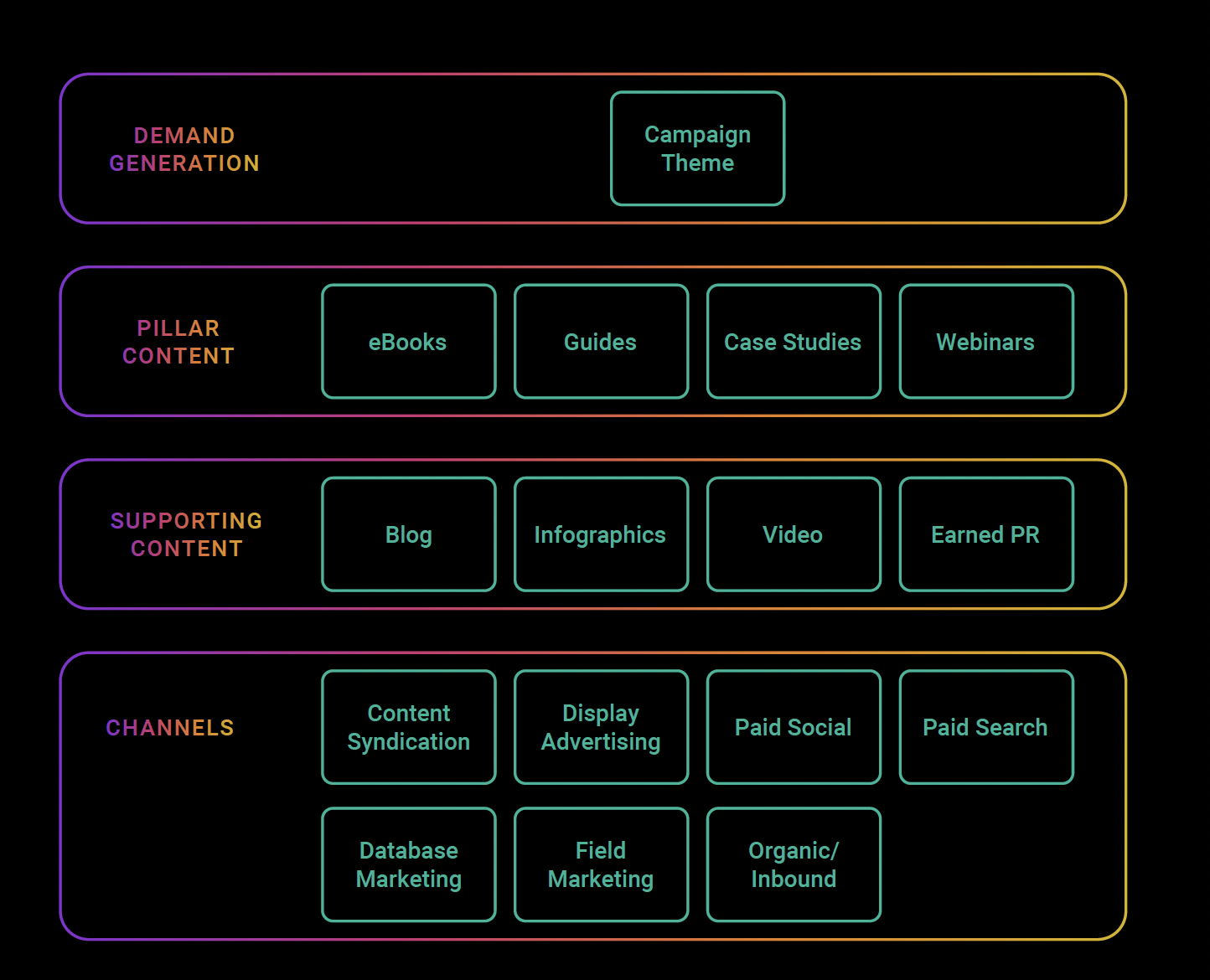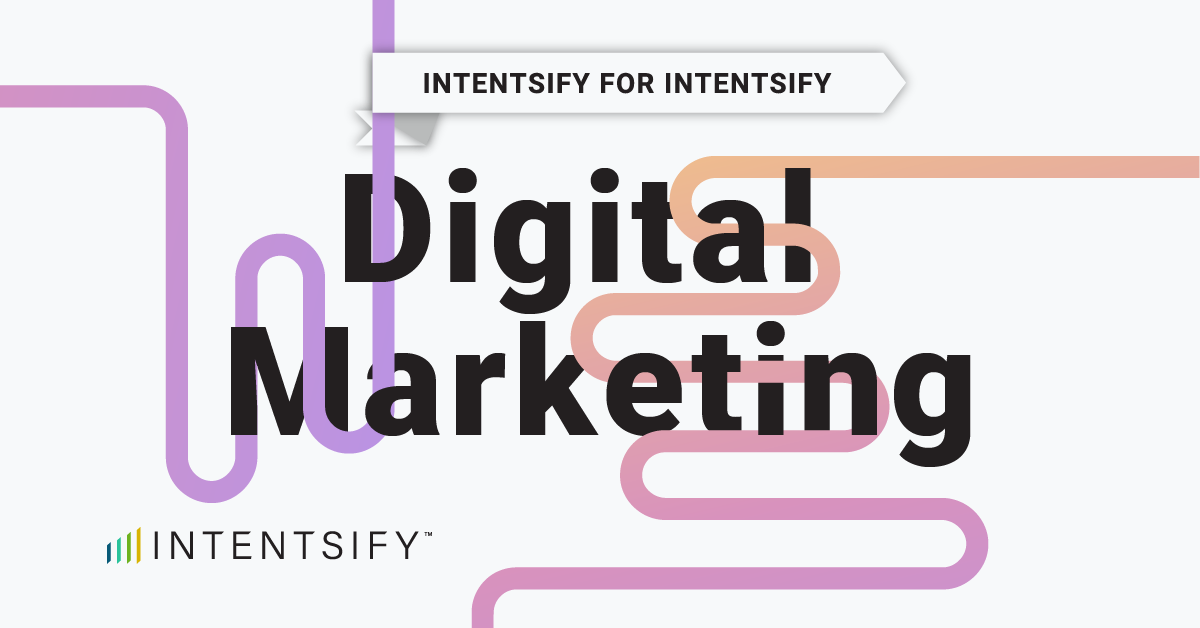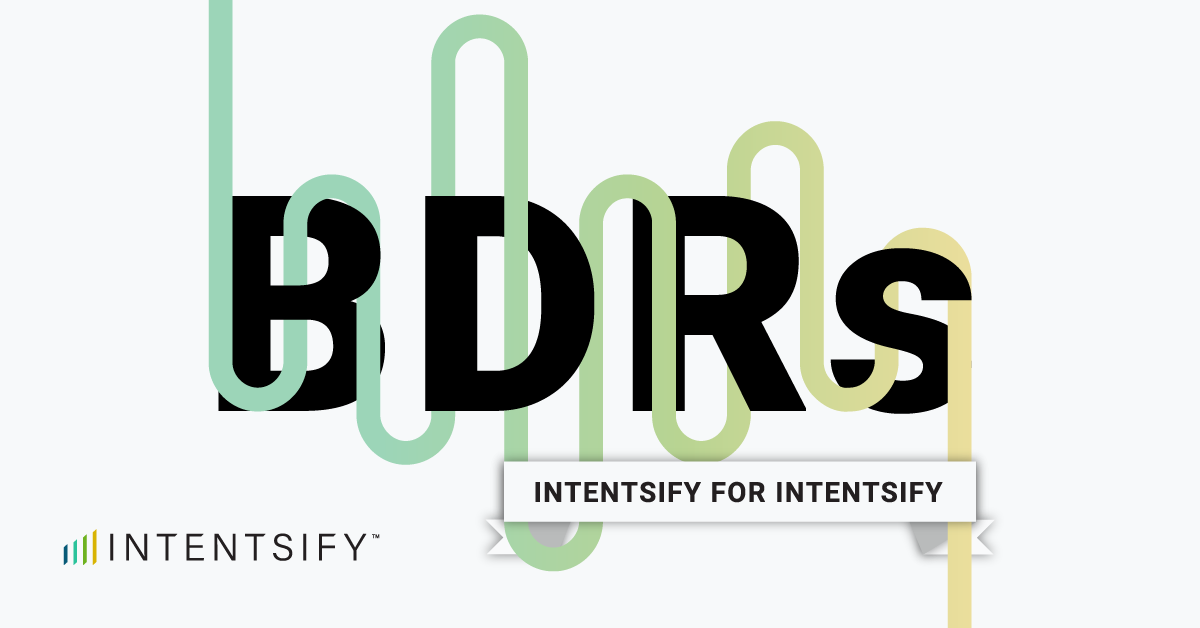The job of the B2B demand generation marketer isn’t easy. Like sales, we feel pressure to meet a revenue target, but the path to success is rarely clear. If you google “how to do demand gen” you’re going to come back with a thousand different opinions on the best way to execute a successful demand gen or growth marketing strategy. Truth is, there is no right or wrong way to get the job done, but there are key steps for running a scalable, efficient strategy that your boss, your CFO, and your sales team will love. The secret: observing a signal-based marketing strategy.
What Is Signal-Based Marketing?
Signal-based marketing is the strategy behind activating intent data to meet your marketing goals. It’s the ability to interpret buying signals so you’re always serving the right message at the right time through integrated marketing programs.
The reality is that intent data is merely a means to an end, and if you don’t know how to activate it, it’s not going to help. But if you do have the tools to activate that data and efficiently act on buying signals, you’re set up to run a successful demand generation strategy.
Disclaimer: As mentioned above, there are a lot of ways to execute a winning demand gen strategy. This blog post just outlines the recipe that works for our mid-sized technology company. Hopefully you can steal some of my tricks and apply them to your own organization.
6 Steps for B2B Demand Generation Success
1. Understand and validate your ICP and Target Account List
First things first: You need to figure out who you’re marketing to. This is an exercise best executed alongside your sales team so you can ensure both teams are speaking the same language to the same accounts.
In the age of account-based everything, you likely have a target account list built. If not, it’s easy to start. First, gather a list of the demographics, firmographics, technographics, and other qualifying characteristics your ideal customers have. Then you’ll want to map out your key personas at those target accounts — what titles are you targeting? It’s likely more than one person. Your buying group may consist of 1-2 champions, a handful of influencers, and a decision maker. You must make sure you understand the characteristics and pain points of each member of the buying committee and make a plan to market to each.
The fun part is validating your ICP and target account list (TAL). I do this by monitoring intent models with Intentsify. In the platform, I can see what accounts are researching topics most closely aligned with our solution, where they are in their buying journey, and which of our marketing programs they’ve interacted with. For example, if there are many accounts showing late-stage interest thar are not on my TAL, I know I have homework.
2. Define what strategy (or mix) works well for your business.
1:1. 1:few. 1:many.
Depending on the solution your company sells and the audience you’re marketing to, you need to decide what strategy is going to work best.
1:1, or the ultimate ABM (account-based marketing) strategy, is best for companies that have the budget and people resources to customize entire marketing plays to a specific account. Many teams employ this strategy when a target account has massive long-term revenue potential. Often, this strategy is a favorite of large companies that can afford to do both 1:1 and 1:many. That said, it is possible for small or mid-sized companies to have a killer 1:1 ABM play – you just need to be prepared to fully understand the buying and customer experience and have the ability to customize each touchpoint.
1:few is the most common ABM play. This means that you are only interested in investing in marketing to a specific segment of your total addressable market (TAM) because you know that group is going to be the fastest path to increasing revenue. Marketers take the customization principles they would execute in a 1:1 strategy and apply them at a slightly larger scale.
1:many is more aligned with a traditional high-volume B2B marketing play. With this strategy, you are marketing to a large portion of your TAM with some customized messaging, but are more focused on casting a wide net and filling the funnel with many qualified net-new leads that can be worked by a business development team to turn into pipeline.
3. Define your campaign strategy
Once you know what strategy or strategies you want to use to reach your target audience, you need to define the campaign strategy. Will you operate on an annual campaign? Quarterly? Monthly? How will you define success?
At Intentsify, I operate on a quarterly basis and run about three campaigns per quarter, each with a different theme or targeted to a specific vertical. Here’s a snapshot of my process
4. Identify what types of content you need to fuel your demand gen strategy
Content is king. You can’t run a successful demand gen strategy without good content. Most of the modern B2B buying journey is done by the prospect researching and reading, not speaking to a sales rep, so having a lot of content available to consume during their research journey is imperative.
Many marketers will debate over gated versus ungated content, but as long as you have an arc of long form content (eBooks, whitepapers, case studies, etc.) and short form content (blogs, videos, infographics, etc.) that nurture prospects into a hand-raising action, you’re doing it right.
At Intentsify, we create three pieces of “pillar” content for each campaign that are our ultimate lead drivers. Each piece of supporting content we create drives the reader back to the pillar content. In a shameless effort to make that happen here, go download our eBook, “Power Your Pipeline with Signal-Based Marketing: How Intentsify Uses Intentsify.”
5. Identify the channels your team should leverage to reach your audience
Once your content is created, you need to define the channels you’re going to use to disseminate and promote it to your target audience, beyond relying on organic inbound traffic.
Repeat after me: An integrated and omni-channel approach to B2B marketing is the only way. Got it? Good.
Gone are the days of only employing a couple of tactics or channels to attract an audience. Now, it’s a mix of retargeting, remarketing, and carefully timed outreach to construct the perfect buying journey that feels serendipitous to the prospect.
I use a mix of paid and organic channels: content syndication, display, paid search, SEO, paid social, database (email) marketing, organic social (predominantly LinkedIn), partner co-marketing, field, and event marketing.
My team crafts the strategies for all digital channels with signal-based marketing at the forefront of the plan. Our content syndication and display programs are both run on Intentsify; guaranteeing us a large number of qualified leads each week. Both of those programs are managed services, plug-and-play. At a high-level, each account is served a different piece of content based on what research stage the Intentsify platform defines. For example, those in “awareness” are served eBooks, whereas those in “decision” are served case studies. Based on downloads, prospects are remarketed to via display and nurtured into the next stage of their journey.
6. Define a nurture strategy to support your prospects through the buyer journey
PSA: Nurture isn’t just email. Many marketers fall into the trap of only leveraging email marketing as a nurture channel. Instead, an omni-channel approach to nurture must be taken to nudge prospects farther down the funnel. As mentioned above, this can be accomplished through remarketing efforts using display or content syndication, but a personal favorite of mine is more personal channels, like events or direct mail.
There is no right or wrong way to keep engaging those that interact with your marketing programs. The worst thing you can do is let someone slip through the cracks and never follow up with a secondary message.
Pro Tips
To avoid the always-awkward blog conclusion paragraph, I’ll leave you with a few pro tips instead.
- Having a solid marketing operations function is key to a successful demand gen strategy.
- Dynamic programs are a must. Make sure the content your audience is being served is updated based on where they are in their research. The last thing you want to do is send a prospect who is ready to make a decision a top-of-funnel eBook.
- Rules of engagement with your sales and/or business development team must be clearly defined. Don’t derail the buyer journey by having a BDR call too early in the journey. Timing is key, so make sure this is a top priority.
Learn more about how my team is generating demand and meeting revenue goals:
Download the Playbook





